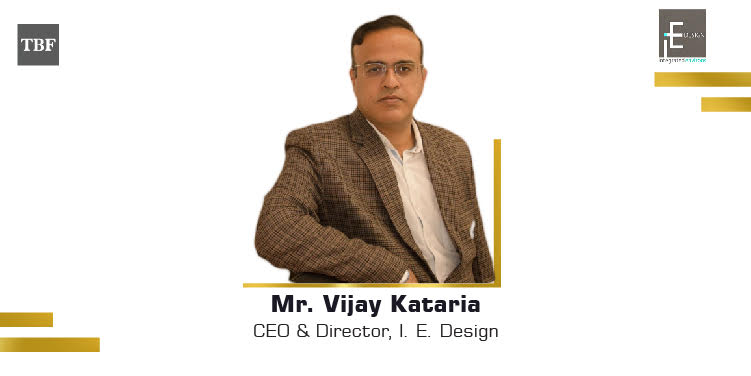Architecture industry has undergone a tremendous change in recent years. New design technology has altered the way of visualizing for the creators as well as the clients. The industry is experiencing a massive boom, with a lot of players vying in this industry. The imperative shift to getting Green building accolades, may have induced a debatable trajectory, but at the same time has made designers more sensitized and careful of the deliverables. However, the story of the land is often ignored– as is the knowledge of the existing patterns of slopes, drainage, circulation and vegetation with the increasing demand. As we build more and more, the baseline context is altered, and the natural rhythms of culture and context are being rejected. This is not a positive trend in the long run.
Addressing these problems and bridging the gap; is the attempt of IE design.
Inception History of IE Design
The inception of IE Design goes back to over 40 years when Shri R B Kataria started the firm under the name of Kataria and Associates. However, after his sudden and untimely demise, son Vijay Kataria took over. Extremely passionate about the field, Vijay has been in a constant effort to update and innovate the firms’ practice of meaningful architecture. The firm is now a reinstated big establishment with two Urban Designers at the fore, expert senior architects with their team of Architects, Interior Designers, Trainees, Graphics designers and other support staff.
Like any other growing architectural firm, I E design has also faced its initial challenges of design rigor and processes being diluted by the day to day mundane meetings and administrative issues in its early years. However, with an open-ended and interactive-cum-collaborative system in place, and defining design benchmarks, these hiccups are being resolved.
Vision and mission of I E Design
Practicing meaningful architecture that touches peoples lives and creates spaces which are harmonious, convivial and calming -is the attempt of the organization.
The future is toward more sustainability – sustenance of resources, processes and the ecosystem. Recognition of the same is imperative, and a grander visions emanates on how I E Design projects can shape the city and contribute to its larger whole.
The Prolific Leader of IE Design
Vijay Kataria, the Director of IE Design has over 20 years of experience in the field of architectural design. He has an exceptional sensibility for design, strong fundamentals, brilliant client rapport, and excellent problem solving temperament.
“With every project, the Firm is creating an influence – a design commitment not only to the Client, but to the City and its environs”
Time and cost bound assignments and perfect assimilation of client requirements are his main priorities. The sound backing of his rich and versatile experience of designing, a wide array of buildings in tandem with his understanding of Indian context of climate and social habits bring an aspect of practicality in every project he deals with.
The significant growth of the office of IE Design over the years are proof of the vision and efforts of the dynamic and passionate leadership. Vijay Kataria has practically single handedly, been responsible for growing the business multifold. Well-traveled and observant, Vijay’s knowledge base make way for applications, innovations and designs for the future.
He has been recognized as highly accomplished in almost all the projects in the Tri City of Chandigarh and peripheral belt and is held in great regard amongst his clients.
Distinctive Products and Outstanding Services
The main expertise of IE Design is in Urban Design and Architecture. With a special joy and affinity for designing people spaces and vibrant communities, the company treats every project in a wholesome and fulfilling manner to deliver meaningful and successful outcomes that make it stand unique.
The hardworking team of the firm have encompassed several Group Housing, Commercial, Township, and Institutional Projects in the North Zone, primarily in the tri cities of Chandigarh, Mohali and Zirakpur. Also, the training in Urban design helps the leaders understand the context of the site in relationship with the city, deal with large mixed use requirements and also the people dimension. So an attempt is made to improvise designs for the users, often foregoing an insert of an Architectural stamp on it – yet balancing the design aesthetically, aspirationally and spatially. Livability is very high on the design index, so is the immense urge to make each project better than the last.
Winning Strategies of IE Design
In Architecture, one’s showmanship or blunder can fossilize all the previous reputation of an organization forever. Client goodwill and good relationship with customers are the two of the most persistent strategies the team of IE Design relies on. The company also implies various marketing strategies such as regular website updates, social media presence, blogs and press releases, and offline as well as online connection with the customers.
Changing space of the Industry with Digital Innovation
The Firm believes that new design technology has altered the way of visualising for the creators as well as the receivers. Space is no longer perceived in three dimensions…it is experiential. Space is now expressed as a play of art, textures, music, void…etc.
“The closer we move to AI and technological advancements in our sphere, the most profound the space can be! However, the bottom line is that all experiences are perceived by the human mind. That is a reality that nothing can change. A balance hence, of mind and matter, is what will lead the way”.
Advice for New Entrants from the Desk of the Director
“Being in the hardcore professional field, as much as in academia and mentorship, we have seen a change of wave in the Architecture graduates and young professionals that have emerged. With the technological advances, the communication in design has taken a leap. More adept and skilled at using these tools to create, these youngsters show great promise in the field of Architecture. Our advice to them would be for them to be harbingers of great change – to protect their resources fiercely and to utilize them well. Dropping ones’ ego in design and having tremendous patience to attain more field knowledge, drawing skills and perfection, is what we would urge them to do.”









